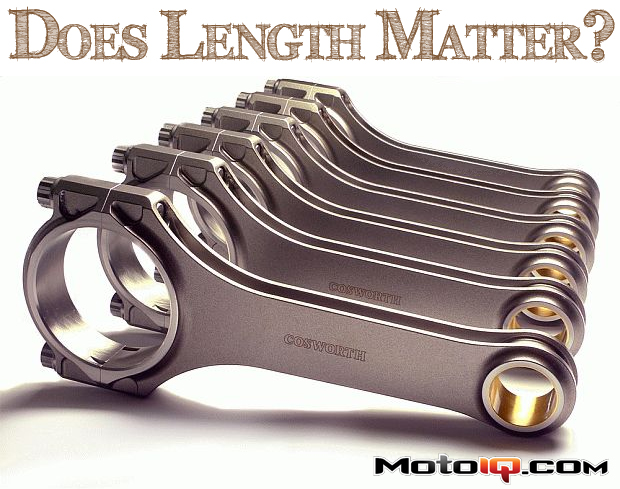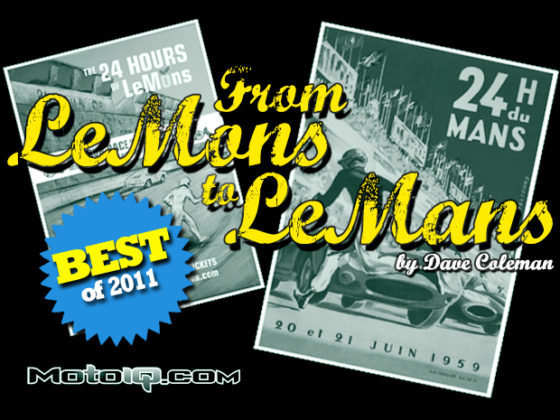,
 |
| This chart shows the effect of rod length on piston acceleration. The higher the ratio, the lower the acceleration. |
More critical for a naturally aspirated engine, the slower acceleration around TDC on the exhaust and intake strokes improves volumetric efficiency at higher rpms. A rod:stroke ratio of 1.7:1 or higher is a good general starting point for a performance engine. 1000cc sportbike engines tend to be around 1.9:1 to 2.0:1 and typically have a redline around 13k rpms. 600cc sportbikes use a ratio around 2.1:1 to 2.2:1 and redline around 15k-16k rpms. From what I’ve researched, the 2009 Toyota F1 engine had a ratio of 2.72:1! The F1 engines were limited to 18k rpms during that period, but it is pretty widely known those F1 engines would rev well into 20k rpms if unrestricted. With these extremely high performance naturally aspirated engines, the longer rod:stroke ratio is very important to making power because the piston spends so little time around TDC due to the extremely high revs; so anything that can be done to improve dwell time benefits performance.
 |
| FI engines rev as high as 20,000 rpm. They have really big rod to stroke length ratios. |
What are the downsides? A longer conrod weighs a little more but that increase in mass may be able to be offset by a reduction in piston mass. The longer rod also results in a little higher piston acceleration at the middle of the stroke, but by then the combustion pressure is greatly reduced resulting in very minimal wear increase or stress if any at all.
 |
| The Toyota F1 engine revved to 18,000 rpm and had a 2.72:1 rod ratio! |
So this longer rod, higher rod:stroke ratio seems awesome. Why aren’t all engines built this way? Well, not all engines are race engines that only operate in the upper rpm range. The lower piston acceleration that benefits volumetric efficiency at higher rpms can hurt it at lower rpms. The port velocity can become too low in the lower rpm range reducing exhaust scavenging effects thereby hurting volumetric efficiency resulting in gutless bottom end torque. This does not make for a very good daily driver stuck in stop and go traffic. As the saying goes, there’s no free lunch! Also, just like when designing intake manifolds, exhaust manifolds, and cams, optimizing for one part of the rev band generally hurts the opposite end. But what we learned is that the rod:stroke ratio is another variable that can be optimized to improve performance.
 |
| When modifying production engines to run longer rods, it is often necessary to cut the piston pin bore into the oil ring. Some people say that this increases oil consumption and speeds ring wear but we have found this not to be the case on our engines. Look for future MotoIQ engine build articles with long rods! |




4 comments
I know one F1 engine manufacturer with a ratio of 3.2 and the connecting rod weighs 2 gram less than a clearly shorter connecting rod of a competitor.
The current 1.6L turbo era? I’m curious if one did better fatigue life calculations than the other, allowing them to go lighter.
Regarding the current turbo era, one manufacturer has a ratio of 2.25 for their 1.6L turbo engine.
No, both are from the V8 era? If you are interested in getting more information, where can I contact you? I don’t want to post such information online.